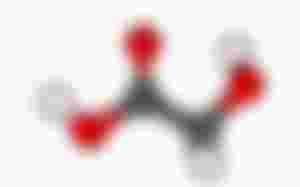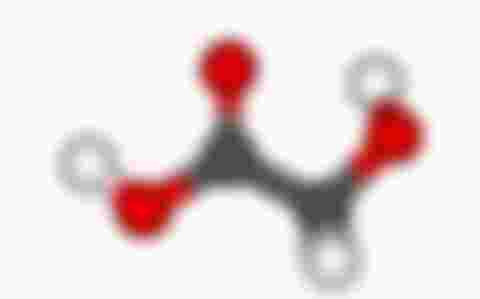
Glycol acid is an organic acid of general formula C2H4O3 which is better written in this form: HOCH2CO2H. It is the simplest AHA acid (alpha-hydroxy acid), which also includes citric, malic, lactic and some other organic acids. These are organic acids which, in addition to the carboxyl (-COOH) group, also have a hydroxyl group (-OH). If there is only one carbon atom between the carboxyl and hydroxyl groups, then these are also alpha-hydroxy acids. If there are two carbon atoms between them, then they are beta-hydroxy acids (BHA):

These acids occur in nature, but can also be synthesized in laboratories. By the way, AHA acids have long been known as an ingredient in cosmetic treatments - namely, at least according to legend, Cleopatra used sour milk for the face, and sour milk contains lactic acid. However, glycol acid is the most widely used in cosmetics for a simple reason: due to its low molecular weight, it penetrates best through the upper layers of the skin and is therefore the most effective. Also, the action of glycol acid is the most researched and is the safest to use.
Glycol acid has recently become a very popular ingredient in preparation cosmetics because it is a chemical peel, exfoliate: glycol acid penetrates under the horny, dead parts of the epidermis (upper layer of skin) and causes the separation of that part from the layer of young cells. Simply put, glycol acid releases young skin and speeds up the process of removing old cells, which give our skin a slightly tired, gray complexion. In this way, the skin becomes visibly smoother, shinier and softer, as the dead layers are removed, which thicken slightly in the area of the wrinkles, so the wrinkles are smoother after the glycol acid treatment. Because dead cells clog pores, regular use of glycol acid prevents your pores from clogging. Clogged pores become wider due to improper sebum secretion, and thus more visible. This means that regular use of preparations with AHA acids, especially glycolic acid, can improve the appearance of skin and pores to some extent.
The effect of glycol acid depends on how long the preparation has been on the skin and on the concentration of glycol acid in the product. Concentrations of 75% (usually 20-70% glycol acid) can also be used in dermatology, but in preparations for home use, the acid is found in much more reasonable concentrations of 4 to 20%. These preparations must be such that the skin can be neutralized after use after use or are easy to rinse off.
For those who are afraid of the use of glycol acid on the skin, I must say that even concentrations that are far higher than those in cosmetics do not have some terrible consequences for the skin, and that you should not be afraid of this substance just because it is acid - it is not hydro-chloric or sulfuric acid to "fry" your face. Concentrations of 35% and 50% are safe to use and apart from mild irritation which passes quickly and manifests itself as a burning sensation on the skin and redness, there are no other consequences.
Since the cells of our skin are constantly dividing and a layer of dead cells is constantly forming on the surface of the skin, the effect of chemical peeling, like any peeling, is temporal and the product should be applied frequently. Some preparations with glycol acid are designed so that you apply them every day for a certain period, for example, within a month, while others you can apply depending on the need, say, optimally, twice a week. However, you should keep in mind that this substance can be destabilized and if you do not use the product every day, but occasionally, it is better to keep it in the refrigerator and try to consume it as soon as possible. In that sense, products that make you use them every day within a certain period are much better for those people who are prone to “forgetting” - this recipe of use disciplines you to use the product every day while it is maximally effective. New formulations of preparations in which glycol is found in combination with the amino acid arginine enable the gradual release of the active ingredient, which reduces irritation and a burning sensation. Glycol acid does not help with deep wrinkles.
What not to do when using glycol acid products:
Since glycol thins the skin, your skin will be more sensitive to the sun, so do not use these products during the day, and if you are afraid or your skin is very sensitive, do not do it in the summer, but leave the product for autumn or spring. However, I use glycol acid for years and in the summer, but, of course, in the evening, after removing makeup. When the glycol stands on my face for a while, I rinse it well and that’s it. I have never had a problem with preparations that have glycol acid and I have only words of praise for those products. The biggest irritation I feel when applying is a slight burning sensation, as if you are being stung by lemon juice. Some people may also experience short-term redness, which passes quickly. Of course, be careful not to get the product in your eye. If you decide to use glycol acid during the summer, then use it in the evening, and during the day, never forget the cream with a protective factor.
Do not use dermal-abrasive preparations while using chemical peels with glycolic acid. So - no scrubs.
If you have melanoma or problems with hyper-pigmentation, it is better not to use products with glycol acid because they can make your condition worse.
There are many preparations based on glycol acid and if you decide to treat, be sure to follow the manufacturer's instructions !!

